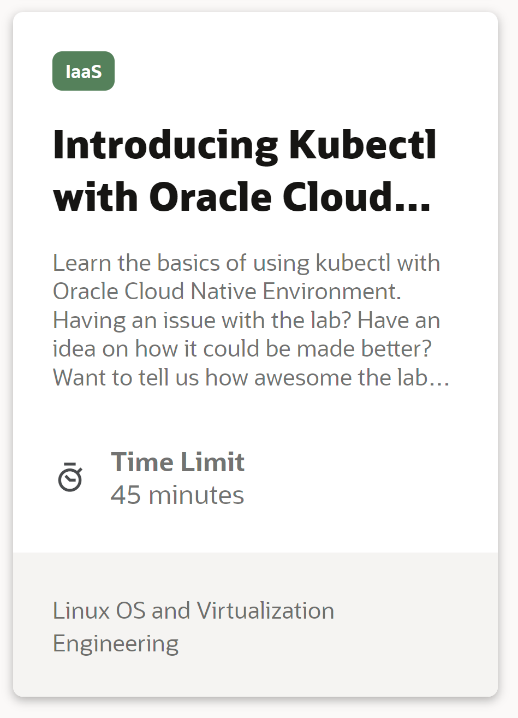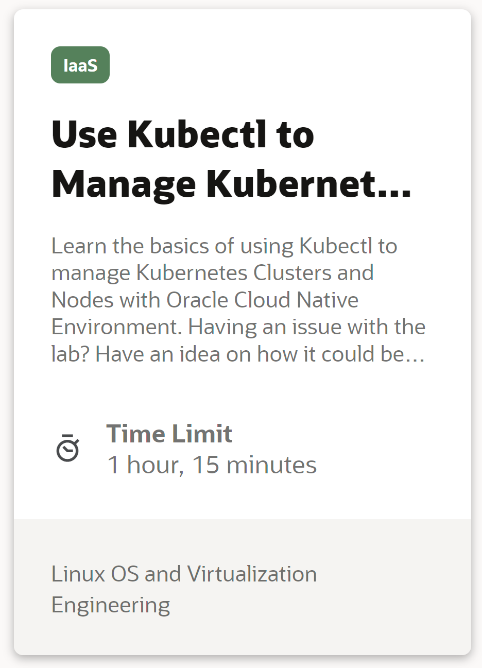This blog is contributed to by Martin Littlecott, who works in the Linux/Virtualization Training Development Team and has designed dozens of hands-on labs for a variety of Oracle Linux and Virtualization products.
Use the kubectl command-line interface to manage Kubernetes clusters
Although graphical tools can manage Kubernetes, many administrators prefer to use command-line tools. The command-line tool provided within the Kubernetes ecosystem is called kubectl. Kubectl is a versatile tool used to deploy and inspect the configurations and logs of the cluster resources and applications.
This blog introduces two hands-on Luna labs on kubectl that are part of the Oracle Cloud Native Environment learning track. Oracle Cloud Native Environment is a curated, standards-based suite of open software technologies for the development and management of cloud native applications. It includes CNCF-certified Kubernetes and a simplified framework for installations, updates, upgrades, and configuration of key features for orchestrating microservices.
Get hands-on experience with the kubectl command-line tool in the free introduction to kubectl Luna lab.
|
Simple steps to perform the labIntroducing kubectl with Oracle Cloud Native Environment The free lab environment deploys a three-node Oracle Cloud Native Environment: operator node, control plan node, and worker node. Because the lab is an introduction to kubectl, it will only focus on using kubectl to discover what Kubernetes resources are available in a new install of Oracle Cloud Native Environment.
|
Get hands-on experience with Kubernetes resource management in the free Luna lab.
|
Use kubectl to manage Kubernetes Clusters and Nodes This lab builds on the basic commands introduced in the previous lab. The lab shows how kubectl can manage individual Kubernetes Nodes and any application(s) deployed onto them. In addition to using kubectl to deploy an example application, the lab introduces concepts such as Taints and Tolerations, and Cordoning, Uncording, and Draining Nodes. |
Start learning now with free hands-on-labs
Embrace the possibilities of cloud native and learn more by visiting the following resources:


